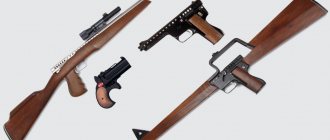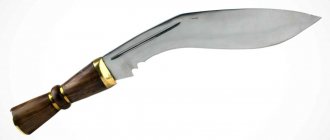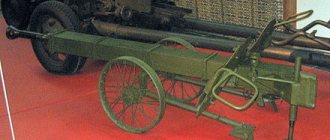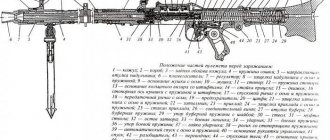| Helmet | |
| Model element | Nijmegen Helmet[d] |
| Media files on Wikimedia Commons | |
Russian
helmet
model 1844. Russian soldier in a leather helmet (pikelhelm), overcoat and boots, 1862. Cavalry helmets of the Russian Imperial Army, 1799, A. V. Viskovatov. Cavalry helmet, 1799, A. V. Viskovatov.
This term has other meanings, see Helmet (meanings).
This term has other meanings, see Helmet.
Helmet
(from the French casque - helmet) - a leather, metal or plastic protective helmet to protect the heads of military personnel, firefighters and representatives of a number of other categories of persons operating in hazardous conditions [1] (miners, builders, speleologists, rescuers, athletes, parachutists, motorcyclists and so on).
Military helmets are designed to protect against shell fragments, bombs, and low-penetrating bullets; they are used both in military operations and in peacetime.
Story
Main article: Helmet (armor)
19th century British fireman's helmet Glasgow police (31 January 1919)
Historically, the helmet was a stage in the development of the protective helmet[2], and received its name from the Latin word for a metal helmet.
Due to the spread of firearms, metal helmets lost their importance by the 18th century, although they remained in regular armies until the 19th century[3].
In the Russian Empire, leather helmets as an element of military uniform were first introduced by G. A. Potemkin, abolished by Paul I, but later restored for individual units[4].
By the beginning of the 19th century, helmets remained an element of protective equipment in heavy cavalry (dragoons and cuirassiers), who fought mainly with edged weapons, and also as an element of dress uniform[4].
However, Napoleon Bonaparte introduced bronze helmets for fire brigades (later introduced in fire services in other countries), and in 1863 cloth helmets were introduced in the British police. Also, in the 19th century, pith helmets became widespread among the colonial troops of several European powers[4].
Later, at the beginning of the 20th century, leather impact-resistant helmets became widespread in aviation and among motorists.
World War I
French helmet of Adrian from the First World War. Steel helmets
of an infantry non-commissioned officer (junior sergeant) RIA and a French artillery lieutenant, First World War, museum, France.
By the beginning of the First World War, patent leather pickelhelms, introduced in 1842, continued to be used in the German army, but they had a more decorative function. After the maneuver warfare of 1914 was replaced by trench warfare in 1915, the soldier’s head became the main target - if the body is covered by a trench, then you still have to stick your head out.
The French were the first to work on the creation of steel helmets[2], in 1915 they developed the Adrian helmet, which was later used by the armies of other Entente countries (Romania, the Russian Empire, Italy, Portugal, etc.).
After Italy entered the war in May 1915, the infantry units of the Austro-Hungarian army operating on the Italian front began to receive cavalry leather helmets (intended to protect against falling stones when conducting combat operations and moving in the mountains).
The Germans initially ignored helmets, but when they realized the importance of the issue, they not only conducted the most thorough research in this area (experiments with a bulletproof helmet, among other things), but also sent even old dragoon helmets to the front, reinforcing them with steel plates.
Stahlhelm - German helmet M1916 from the First World War
In 1915, the Germans produced a significant number of helmets of a wide variety of shapes, shot them at the training ground and drew up technical requirements for their shape, metal thickness and weight.
In 1915, German troops began to receive Pickelhaube helmets mod. 1915, issued under wartime conditions: unlike pre-war pickelhelms, they were not leather, but made of thin metal sheet and pressed cardboard, but their protective properties were considered insufficient. Subsequently, in 1915, the assault engineering battalion of Captain Ernst Rohr (Sturmabteilung Rohr) operating on the Western Front received the first Stahlhelm steel helmets. The following batches of helmets arrived to equip observers, sentries and snipers[5].
By the beginning of 1916, the University of Hanover developed the M1916 helmet, which began to enter the army en masse and for a long time became the new symbol of the German soldier. Its uniform and protective qualities were recognized as the best among the warring countries. The M1916 helmet was adopted by the armies of the Central Powers: Austria-Hungary, Bulgaria, the Ottoman Empire, and the latter was supplied with a special version of the German helmet without a visor.
A special forehead plate was also produced for the helmet, which, according to its inventors, was supposed to enhance the protection of the frontal part, intended for sentries and machine gunners. Such mounted armor did not live up to expectations: even if a bullet at close range could not pierce a helmet, the force of its impact was such that the soldier’s cervical vertebrae could not withstand it.
WWI 5th US Marine Corps Brodie helmet, similar to the British one
Units of the British Expeditionary Force in France initially received a number of French helmets, but already at the end of 1915 the Mk.I steel helmet (initially called the “Shrapnel helmet”) was developed and began to enter service with the troops. Until the end of the war, 7.5 million of these helmets were produced, which entered service with the dominions of the British Empire[6]. The English helmet, similar to medieval chaplains, had developed brims. The helmet did little to protect the head from a blow from the front (it was worn too shallowly), but the wide brim provided protection from shrapnel or a blow from above.
The British calculated that their helmets reduced losses in killed by 12% and wounded by 28%. The share of head injuries in the total number of injuries decreased from 25% to 3%. The French obtained similar results with their Adrian helmet.
In 1916, the assault units of the Italian army "arditi" began to receive "Farina" steel helmets.
In 1917, production of the helmet “ Stahlhelm nach inländisches Muster, 1917M”
", and the English helmet was adopted into service in the United States under the name M1917.
It is noteworthy that steel helmets from the First World War were primarily intended for anti-shrapnel purposes[2]. A helmet did not save you from a rifle bullet. There have been attempts to strengthen helmets and make them bulletproof. However, it turned out that the impact of a rifle bullet on a helmet (even without penetrating it) leads to severe neck injuries. Thus, the helmet mainly protected against fragments, shrapnel, bullets on the way out, as well as from the impacts of various solid objects scattered during shell explosions.
Russian army (1914-1917)
Expeditionary force of the Russian army in France.
Summer 1916, Champagne. Flag bearer, assistants and adjutant of the Shock Detachment of the 8th Army (later “Kornilovsky”) Lieutenant Prince Ukhtomsky, 1917 (RGAKFD). On the helmets there is a skull with crossbones; on the sleeves there is a blue regimental patch.[7]. In 1915, the Russian military attache in France, Colonel Count A. A. Ignatiev, reported to Petrograd about the use of Hadrian’s helmet in the French army and insisted on the immediate introduction of helmets in the Russian army, however, at a demonstration of the French helmet, Nicholas II spoke out against the introduction of the helmet in the Russian army [ 8] and the execution of the decision was delayed.
In 1915, the General Staff of the Russian Empire decided to begin the development of the first Russian steel helmet based on the design of the French Adrian helmet of the 1915 model[9].
In the spring of 1916, French Adrian helmets were received by soldiers of the Russian Army Expeditionary Force who arrived on the Western Front, and the French side took over the provision of equipment for them.
In the spring of 1916, the question of equipping the Russian army with Adrian helmets on the Eastern Front was again raised, but Nicholas II refused to approve this decision and only in the summer of 1916[10] 1 million Adrian helmets were ordered in France for the Russian army[8]. The only difference between the helmets of the Russian order and the helmets of the French army was that they had a relief Russian double-headed eagle on the front part.
The Russian army began receiving domestically produced helmets only in November 1916. The French helmet of Adrian was taken as a basis. But Russian designers made their helmet easier to manufacture[9] - one-piece, rather than assembled from three parts. The metal on the helmet has become much stronger. The main order for the production of helmets was placed in the Grand Duchy of Finland at the Sohlberg-Oy and VW Holmberg factories, but the revolutionary events of early 1917 disrupted the helmet production plan and prevented the supply of helmets made in Finland to Russia. In total, the Sohlberg-Oy plant managed to produce 500,000 helmets, and the VW Holmberg plant produced 100,000 helmets, but a relatively small part was delivered to the Russian army and they were not widely used (the supplied helmets were issued mainly to shock battalions). In 1918, Finland declared independence, and the helmets produced but not sent to Russia remained at the disposal of the Finnish government. During the Civil War, a small part of these helmets were used by the armies of the White movement.
USSR (1920s - 1945)
A fire crew extinguishes German incendiary bombs, Moscow, 1941
In the USSR, a standard helmet for the fire department was adopted in 1923, and for the army, work on creating a new steel helmet began in the second half of the 1920s, but in the 1920s-30s in the Red Army continued to use Hadrian helmets and helmets of the 1916/17 model (to which a red star was sometimes attached - either a large tin one or a smaller one; often the star was simply painted on). For the Soviet leadership, the use of helmets, also adopted in the army of unfriendly Finland, was rather a necessary measure, primarily due to a lack of equipment, however, there is evidence of the re-production of a small batch of helmets of this model in Leningrad in the early 1930s.
In the USSR, “Adrian’s helmets” could be seen at parades.
Red Army soldiers and commanders of the 1st Moscow Proletarian Rifle Division at the parade in honor of May 1, 1938, wearing Adrian helmets. Steel helmet (helmet) mod. 1936 steel helmet (helmet) SSH-40 Rifle troops of the Red Army, “Before the offensive”, Soldiers read a combat leaflet before the offensive, September 3, 1943, steel helmets
of various types are visible.
In the USSR, the topic of personal protective equipment for military personnel, including steel helmets, was addressed in the early 1930s. However, at first, a few “Hadrian helmets” of French and Russian production could only be seen in parades on soldiers of privileged units (for example, the Proletarian Division).
In 1934, an order was issued to develop a new type of steel helmet. The sample presented to the military leadership was personally tested by Marshal Budyonny, chopping the helmet with a saber. Despite the fact that this episode is usually considered anecdotal, there was common sense in the marshal’s actions. Since the First World War, the steel helmet has been considered as a means of protection against shrapnel (which made up 50% of field artillery ammunition in the 1930s). The blow with the saber simulated a hit from shrapnel (Budinny commented that the helmet did not sufficiently protect the fighter’s shoulders from being hit from above).
The converted helmet (with increased brim) was adopted by the Red Army under the name “Red Army helmet steel model. 1935", in other sources - SSh-36. In this form, it looked a little like a German helmet from 1916. "Adrian's Helmets", which were stored in warehouses, were transferred to the fire department - they served firefighters at least until the 1950s. Steel helmets in the USSR were usually painted with matte khaki paint. In the Red Army, no insignia was applied to ordinary steel helmets, and red stars were applied to ceremonial helmets. Subsequently, it turned out that the large fields of the new sailboat create greater windage. In strong winds, as well as when riding a horse, motorcycle, or in the back of a truck, this led to the SS being blown to one side. In addition, the helmet was too heavy.
Work has begun on the creation of a new combined arms helmet. In 1937-38, several experimental models were created and tested at the Rzhev test site. In 1938 the final choice was made. The contour of the helmet acquired new contours, its weight was 1,250 grams, the wall thickness was 1.9 mm, and it was made of the best quality steel. painted olive or khaki, sometimes the outline of a five-pointed star was depicted on the front of the helmet. On the inside of the helmet, in the back of the head near the lower edge, on Soviet helmets a stamp of the manufacturer was affixed, as well as a stamp indicating the size of the helmet.
The under-body device had a dome shape, was made, as a rule, of fabric (the under-body device could also be made of leather, leatherette or waxed fabric), framed in the lower part by a strip of leather or leatherette. A lining of cloth or felt was installed under the fabric. The size of the undercoat was adjusted using a cord located in the upper part of its dome. The fabric base was fastened to a steel hoop, which, in turn, with the help of holders, was attached to the surface of the helmet with three rivets, thus preventing the undercoat from coming into contact with the walls of the helmet, thereby providing ventilation and performing shock-absorbing functions.
In 1940, a new type of steel helmet was adopted - “Steel helmet mod. 1940" (SSh-40), which existed for several decades without any major changes.
The design of the SSh-40 differs from the previous model, the SSh-39, in the use of a sub-tulle device or sub-tule, which is simpler and stronger. Hence their main external difference: in the SSh-40, six rivets were used to fasten the undercarriage, in the SSh-39 - three. The undershirt consists of three parts - “petals”, made of artificial leather or fabric, which are connected at the top of the helmet with a cord designed to adjust the fit. On the inside of each petal there is a shock-absorbing pad made of cotton wool. The canvas chinstrap consists of two halves attached to rings on the sides of the helmet. One of the parts at the free end has a sliding buckle; the end of the other half is crimped with a semicircular metal mandrel. Unlike previous examples of steel helmets, the SSh-40 was produced in only three sizes (“numbers”). The weight of the steel part of the helmet (without the under-helmet device) of the largest size is 800 g.
The silhouette of a Soviet soldier in SSh-39 and SSh-40 became the image of a victorious warrior for many years.
Germany (1918—1945)
After the end of the First World War, steel helmets remained not only in service with the armed forces of the Weimar Republic created on March 6, 1919, but also with other armed paramilitary forces.
In 1933, production of a special lightweight helmet made of vulcanized fiber with an aluminum frame began for military personnel of units participating in parades.
In the mid-1930s, German military experts came to the conclusion that the 1916 helmet did not fully meet the requirements of the time: it was designed to protect primarily from lead shrapnel bullets, but in the 1930s shrapnel was no longer the main type of artillery shells for field artillery and an army helmet was supposed to provide protection from larger and heavier fragments of high-explosive fragmentation shells[11].
To develop a new version of the steel helmet, designers were brought in, who, together with the military, were able to select the optimal combination of the protective properties of the helmet while reducing its weight; at the same time, some other issues were resolved: cheaper and manufacturable production.
In 1935, the new M35 helmet was adopted by the Wehrmacht. The change in the role of infantry in war, the increase in its mobility, the abandonment of positional battles, in which maximum head protection was the main function of the helmet, led to a reduction in the size of the visor and back pads. The helmet was stamped from alloy carbon steel with the addition of molybdenum with a thickness of 1 to 1.15 mm. The helmet could withstand pressure up to 220 kg per mm², which provided protection even from large fragments and pistol bullets.
In 1936-1937, a special helmet for airborne units was developed and adopted in 1938.
In 1938, a helmet was created for air defense units Luftschutz (German) Russian, which received the name “gladiator” from collectors because of its original shape. The main sphere of the helmet had a similar M34 shape, and the conical fields were significantly modified. Along the line connecting the helmet sphere and conical brims there was a semicircular rim, made during the stamping process of the product (similar rims can be found on helmets for civilian paramilitary structures, made on the basis of later models of army helmets - M35, M40). On the helmets of the Luftschutz and other paramilitary forces, all types of liners used on German helmets were used - there are liners of the 1931 model, helmets with a liner made according to the M16 model from three leather segments attached to a hoop, as well as liners consisting of separate leather petals, attached to a hoop. Methods for attaching a balaclava were used with both four and three clasps.
There are many variants of the helmet, differing in the method of construction: three-piece, two-piece, one-piece, one-piece with a side, one-piece with a side without brim, reminiscent of a parachute helmet, one-piece with a special crest for the fire police and an experimental SA helmet.
In addition to air defense units, Gladiators were used by the Volkssturm, SA assault troops and other organizations.
In the summer of 1942, production of the M42 helmet began.
In other countries
In 1923, the M/23 steel helmet was developed for the Danish Army.
In 1926, the Adrian helmet was modernized in France (the new version of the M-26 differed from the M-15 in that its dome was stamped from one sheet of steel, and not from three).
In 1931, the Polish army adopted a steel helmet mod. 1931.
In 1932, the Japanese army adopted the “type 92” steel helmet of the 1932 model; the vz.32 helmet was developed in Czechoslovakia. Also, in 1932, a new helmet for the Italian army was tested, based on the results of which the 1933 model helmet was adopted for service in November 1934.
In 1936, the Bulgarian army adopted a steel helmet model 1916 instead of the German helmet. 1936.
In Great Britain, after the start of German bombing of the country at the turn of 1940-1941, a special steel helmet was created for air defense units and the civilian population, but the British army fought in World War II wearing Mk.II helmets, which were slightly modified examples from the First World War. British airborne troops received an airborne helmet.
The US also initially used the M1917 helmet, but developed its own steel helmet by 1941. In 1942, a fiber balaclava “ M1 Helmet Liner”
"(which could be worn separately as an impact-resistant helmet, and in a combat situation an M1 helmet without a liner was put on it)[12]. It was customary for Americans, both then and now, to put insignia of military rank on their helmets.
By the beginning of 1940, steel helmets had been introduced into almost all armies of the world[13].
After 1945
In the second half of the 20th century, a certain standardization of helmets took place among NATO countries and their allies; Soviet-style helmets became widespread in the armies of socialist states.
At the same time, the development of new models continues: for example, in the 1950s, new helmets were introduced in the armies of France and the GDR, in the 1960s - in the USSR (helmets SSh-60 and SSh-68) and Poland (wz.67) , in the early 1970s - in Bulgaria (steel helmet model 1972) ...
Until the early 1980s, the armies of all states were armed with helmets made of sheet steel[14].
PASGT helmet was adopted by the US Army.
[15] (received the unofficial nickname “Fritz”, since it almost completely replicates the shape of the German helmet of the 1916 model) - the first example of a non-metallic protective helmet. In 1985, the non-metallic helmet Mk.6 was adopted into service in the UK, in the early 1990s - in Germany (Gefechtshelm M92) and France (SPECTRA).
In the USSR, in the 1980s, production of the STSh-81 “Sphere” titanium helmet began.
At the end of the 1990s, the Steel Research Institute developed the first Russian fabric-polymer helmet P7 (index 6B7) mod. 1999 (in 2008 its improved version 6B7-1M was presented), however, for economic reasons, in 2000 the production of a modernized version of the SSh-68 helmet began - the new steel helmet SSh-68M (index 6B14) had protection reinforced with ballistic fabric from the inside of the helmet[ 16]. At the same time, the troops continued to use the SSh-60 and SSh-68 helmets.
Since 2003, the US Army has used a Kevlar helmet model MICH TC-2000 Combat Helmet
, as well as its improved version -
Advanced Combat Helmet
.
In 2006, a new type of fabric-polymer helmet was adopted in Russia (lightweight combined arms 6B26, combined arms 6B27 and airborne 6B28), but the 6B47 helmet was created for the promising set of equipment for military personnel “Ratnik”.
In May 2020, during an analysis of the causes of death, wounds and injuries of military personnel of the Ukrainian armed forces in the combat zone in eastern Ukraine, it was found that wounds and head injuries accounted for 18.8-22.6% of the total number of fatal and non-fatal wounds and injuries military personnel of the armed forces of Ukraine, however, analysis of the effectiveness of personal protective equipment is difficult, since during the period under study the troops used helmets of various types and models[17].
Crests and officer's helmets
The officers probably used the same type of helmet as the legionnaires, but with some modifications. Representatives of the banner group could wear it together with a mask, and attach the skin of a predatory animal on top. Centurions attached a transverse crest (or plume) made of horsehair or feathers to their helmet. To do this, on the top of the helmet there was a “socket” for the comb holder, and on the sides there were two rings for fixing it in a transverse position. There is a version, often found among Western reconstructionists, that the options used longitudinal ridges and a pair of feathers inserted on the sides, but there is no archaeological confirmation of this. There is only a find of an imperial helmet with inserts on the sides, but whether they were used for feathers, and whether it was an option helmet is a big question.
Fragment of the stela of the centurion of the XVth "Apollonov" legion (Legio XV Apollinaris Pia Fidelis). Discovered in 1880 in the ruins of the Roman Carnuntum (lat. Carnuntum), it is located in Austria, in the Vienna Kunsthistorisches Museum. 1st century AD
Helmet type Imperial Italic D. There is a “socket” for a comb. Iron with bronze decorations. Found at the bottom of the Rhine, Mainz (Germany). City Museum of Worms. 4th quarter of the 1st century AD
Imperial Gallic F type helmet. The main material is iron. Found at Witcham Gravel, Ely, Cambridgeshire. Kept in the Canterbury Roman Museum. First half of the 1st century AD
The probable wearing of a crest on a helmet is evidenced by one found crest with black horsehair, as well as many “forks” for attaching crests to helmets of various designs and shapes. On the sides, the crests were attached to the helmet with laces, pulled tightly onto rings located near the ear holes, if the helmet belonged to a centurion, or on the forehead and back of the head, if the crest was attached longitudinally. Among the legates and praetorians, the crest could also be attached longitudinally, and the plume could be inserted into a special groove, like a “cassette.”
Comb mounts. Material: copper-containing alloy. Windonisa (Windisch, Switzerland). 40-140 AD e.
Horsehair comb. Chesterholm Museum Bardon Mill, Hexham NE47 7JN, England. 1st-2nd century AD
Comb mount. First half of the 1st century AD
Work helmets
Work helmet.
Construction workers began using safety helmets at the beginning of the 20th century. The first helmets were made of aluminum. But then they decided to abandon such helmets, since aluminum is a good conductor of electricity. Helmets began to be made from fiberglass. In the 1970s, helmets began to be made from polyethylene plastic[18].
According to GOST 12.4.087-84 used in Russia, helmets are produced in the following colors: white - for executives, red - for foremen and foremen, yellow and orange - for junior and service personnel[19].
Reaction to impact
“However, there are problems that accompany working with composite materials intended for systems with improved protection,” she noted. The energy absorption of Spectra fiber depends on its ability to respond to impact (impact loading). However, in order to give polyethylene the necessary stability, it must be combined with a polymer binder. This may limit its ability to respond to exposure.
“When you combine fiber with a strong polymer, you limit those possibilities,” Wagner explained. One of the hardest compromises we have to make is finding the right polymer system to provide all the performance we need to make a good helmet, while also harnessing the full potential of the fiber to react and absorb all the energy of a given threat. "
This should not be forgotten throughout the production process. “While we are making technological advances in Spectra fiber, its strength and performance, we must also advance the technology of the polymer binders we use in our products, because we can ruin all the progress we have made in improving the fiber by using the wrong one. polymer base in the helmet design,” she noted.
Photo gallery
- British Guards grenadier in field uniform.
- Trench warfare 1915.
- Steel helmet SSh-36, the main helmet of the Red Army from 1936 to the beginning of the 40s, 1939.
- Helmet, model 1940, equipment, officer's jacket, senior lieutenant of the signal troops, model 1943.
- Insignia on an American helmet.
- American paratroopers wearing PASGT helmets.
- Modern Japanese helmet 88.
- Ceremonial helmet (Pickelhelm) of the Royal Guard in Sweden.
- Riding Safety Helmet
Gallery[edit]
- London constable's helmet, 1890s.
- English policeman's helmet, 1940s.
- English policeman's helmet, 1940s.
- English policeman's helmet, 1940s.
- A stand with various police batons and helmets of English constables.
- A police helmet that has been damaged over time.
- Constable in a police helmet.
- Constable in a police helmet.
- Constable in a police helmet.
- Glasgow constables wearing police helmets, 1919
Notes
- Helmet // Soviet encyclopedic dictionary. ed., ch. ed. A. M. Prokhorov. 4th ed. M., “Soviet Encyclopedia”, 1986. p.555
- ↑ 123
Helmet // The New Encyclopedia Britannica. 15th edition. Micropaedia. Vol.5. Chicago, 1994. pages 817—818 - Helmet // Soviet military encyclopedia. / ed. N.V. Ogarkov. volume 8. M., Voenizdat, 1980. p.522
- ↑ 123
Helmet // Encyclopedic Dictionary of Brockhaus and Efron: in 86 volumes (82 volumes and 4 additional). - St. Petersburg, 1890-1907. - Ian Drury, Gerry Embleton. German Stormtrooper, 1914-18. London, Reed International Books Ltd., 1995. pages 8-9
- Martin Pegler, Mike Chappell. British Tommy 1914-1918. Weapons, armor, tactics. London, Osprey Publishing Ltd., 1996. pages 13-14
- Deryabin A.I., Palacios-Fernandez R.
Civil War in Russia 1917-1922. White armies. - M.: AST, 1998. - 46 p. - (Soldier). — ISBN 5-237-00041-X. - ↑ 12
A. A. Ignatiev. Fifty years in service. volume II (books 4-5). M., “Pravda”, 1989. p.218-219 - ↑ 12
Wartime uniform // V. N. Shunkov, A. G. Mernikov, A. A. Spektor. Russian army in the First World War 1914-1918. M., AST, 2014. pp.48-51 - A. B. Astashov. Russian Front in 1914 - early 1917: military experience and modernity. M., “New Chronograph”, 2014. p.102
- Yustrov. To the dispute about the helmet // “Military Foreigner”, No. 2 (19), 1936. p.105
- Abroad // magazine “Technology of Youth”, No. 7, 1942. p. 41
- N. Sobolev. From the past: metal helmet // magazine “Technology of Youth”, No. 1, 1940. p. 62
- Dmitry Kupryunin, Alexander Egorov, Evgeny Chistyakov. Helmet of the future // Arsenal, No. 2, 2012. pp. 42-45
- P. Mogutov. Development in the USA of a new personal protection kit // “Foreign Military Review”, No. 3, 1980, pp. 36-37
- Mamontov D. Cast iron forehead: Take care of your head // Popular Mechanics. February 2007
- O. V. Chernozubenko (TsNDI OVT ZS Ukraine). Paths to the development of zahisnyh sholoms // Prospects for the development of modern military technology of the Ground Forces. Collection of proceedings of the International Scientific and Technical Conference (Lviv, May 14-15, 2020). Lviv: DIA, 2020. pages 96-97
- Construction helmet as a headgear
- Yellow safety helmet - who owns it? Archived copy from March 4, 2020 on the Wayback Machine
Literature
- Helmet // Encyclopedic Dictionary of Brockhaus and Efron: in 86 volumes (82 volumes and 4 additional). - St. Petersburg, 1890-1907.
- Petrov E., Chusov S., Shcherbakov A., Yankov V, Egorov A.
Problems of creating helmets with a high level of protection (Russian) // Equipment and weapons yesterday, today, tomorrow. — 2012. — August (No. 08). — P. 2-6. - Brian C. Bell, Kevin Lyles. Wehrmacht combat helmets, 1933-1945. London, Osprey Publishing Ltd., 2004.
- Kupryunin D., Egorov A., Chistyakov E.
Helmet of the future (Russian) // Arsenal: magazine. - 2012. - T. 32, No. 02. - P. 42-45. - Martin J. Brayley.
Tin Hats to Composite Helmets: A Collector's Guide. — The Crowwood Press, 2008.
Reconstruction
Most helmets are suitable for both legionnaires and auxiliaries. The main thing is to choose the right period to reconstruct. Since there is information that helmets could be passed on to their owners several times, their lifespan could exceed 50 years! This means that earlier helmets can be used at the beginning of the second century, but not vice versa - later helmets cannot be used for earlier periods. For reconstruction, there are two approaches to the production of helmets - the authentic seamless one and the stylized welded one. The latter will cost less, and it is recommended to start with it and take the simplest and cheapest type - for example, the Imperial Italian J1. In the future, you can strive for more interesting and seamless options.
Imperial Italian type helmet J1, reconstruction
Imperial Italic D type helmet, reconstruction
Imperial Italic G helmet, reconstruction








